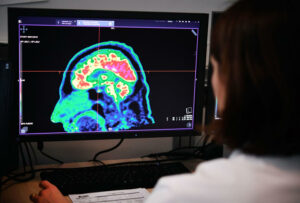Scientists have made a major advancement in medical technology with the creation of tiny robots that can be injected into the human body. This new technology promises to revolutionize how we treat complex medical conditions, particularly brain aneurysms, a condition that causes around 500,000 deaths annually.
How the Tiny Robots Work
Researchers, led by the University of Edinburgh’s School of Engineering, have developed magnetic nanobots that carry blood-clotting drugs. These bots, each significantly smaller than a red blood cell, are coated with a material that melts at specific temperatures. This allows them to release medication precisely where it’s needed.
In a recent study, scientists injected billions of these nanobots into an artery and used magnets and medical imaging to guide them to an aneurysm. Once in position, the bots were heated to release the drug, effectively targeting and treating the aneurysm without invasive surgery.

Implications for Future Treatments
This innovative technology could reshape how we approach treatments for brain aneurysms and other critical conditions. Dr. Qi Zhou from the University of Edinburgh highlights that nanorobots could enable less risky surgical repairs and deliver drugs with pinpoint accuracy. They could also reduce the need for implants and the complications associated with them, such as implant rejection and adverse reactions to blood-thinning medications.
The research, published in the journal Small, underscores the potential for these nanobots not only to treat aneurysms but also to aid in stroke treatment by removing blood clots. This development marks a significant step towards more precise and less invasive medical treatments.
For further information, visit: https://www.bing.com/
Read our previous articles: https://scitechupdate.com/index.php/researchers-develop-biocomputer-by-linking-16-brain-like-structures-grown-from-human-cells/
https://scitechupdate.com/index.php/breakthrough-material-nasas-grx-810-could-change-everything
Breakthrough Material: NASA’s GRX-810 Could Change Everything
https://scitechupdate.com/index.php/scientists-synthesize-diamonds-in-just-15-minutes
https://scitechupdate.com/index.php/researchers-notify-of-u-s-groundwater-depletion-by-2050
https://scitechupdate.com/index.php/big-achievement-first-ever-capture-of-x-ray-image-of-single-atom
https://scitechupdate.com/index.php/china-is-generating-heat-waves-across-the-pacific-ocean
https://scitechupdate.com/index.php/super-material-could-have-more-potential-than-graphene
https://scitechupdate.com/index.php/first-5g-enabled-surgery-performed-by-doctor